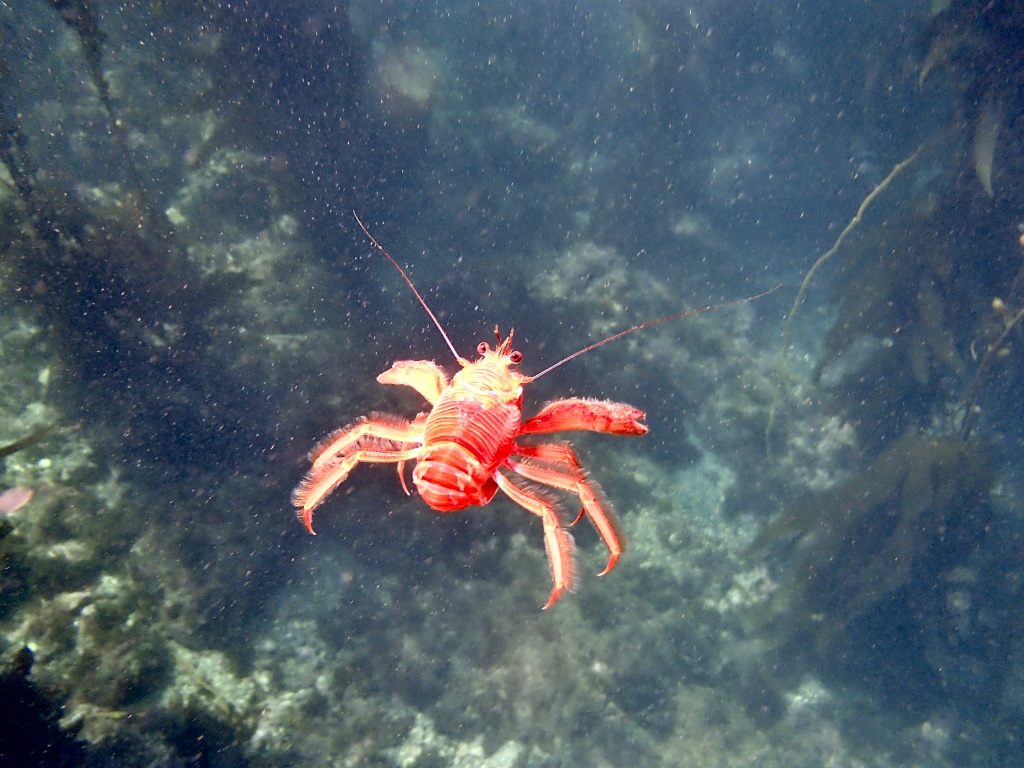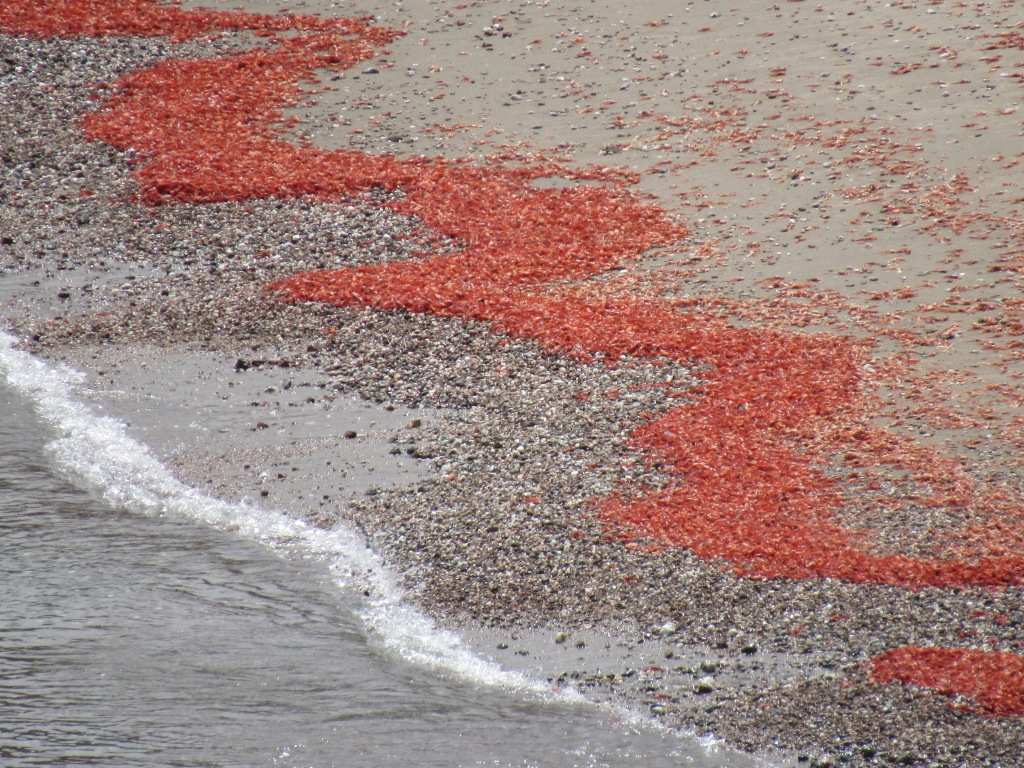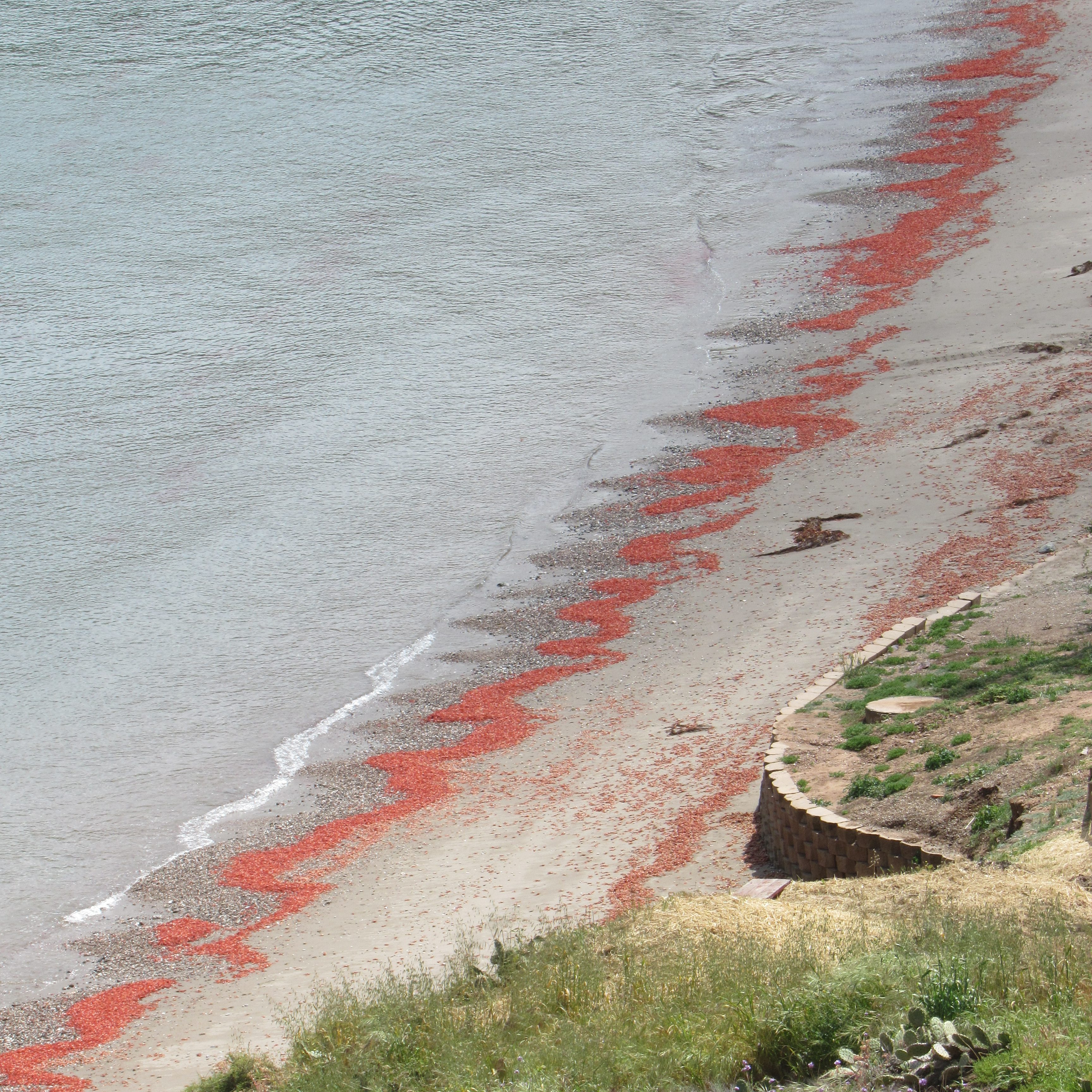Feeling Crabby? Tuna Crab Swarms and Mass Stranding Events

In the last several months, an unusual creature has been showing up in California’s coastal waters. Although they haven’t yet made their way into the intertidal, huge swarms of tuna crabs (Grimothea planipes), a pelagic member of the squat lobster family, have been seen off the SoCal’s coasts and may end up stranded on beaches.
The tuna crab is neither a true crab nor a lobster, despite its common names. It is an anomuran, a member of the Infraorder Anomura, which also includes hermit crabs. These crustaceans are semi-pelagic, spending much of their lives in the water column instead of on the ocean floor like most crustaceans. They swim shrimp style: backward, propelling themselves with their powerful tails. While adults, these animals make nightly journeys from the ocean floor to the surface to feed on plankton.
The tuna crab’s presence in SoCal waters is usual: the New York Times even wrote an article about it. They are native to the warmer, subtropical waters off the coasts of Mexico, so finding them in California’s colder coastal areas is rather odd, indicating something different is happening under the waves. Sometimes the arrival of tuna crabs corresponds with a warm water El Niño event when the cold California current is overpowered by the warmer waters welling up from Mexico. Other times their arrival seems to be caused by strong ocean currents originating in Baja California.

Tuna crabs are an important food source for a variety of sea birds and fish, notably the tuna from which they derive their common name. As a result, larger fish like tuna sometimes come with the tuna crabs, following their food source north. Snorkelers and divers off the coasts of San Diego have seen privy to the tuna crabs’ presence for several weeks now, swimming among giant swarms of the creatures at night.
So why am I devoting a whole post on a blog about the intertidal to tuna crabs when they aren’t intertidal creatures? They aren’t normally intertidal creatures, but every once in a while a tidepooler or beachcomber will find them and such an event might be occurring soon.
Mass Stranding Events

For the last several months, velella velellas, pelagic hydrozoans, have been washing up on SoCal’s beaches by the tens of thousands. While these animals live in the open ocean, every so often, they are stranded en masse on beaches and in intertidal zones when the tide recedes.
Such may be the upcoming fate of the tuna crabs.
Tuna crabs are also prone to mass stranding events in the intertidal. A stranding could be caused by several factors. If it was warm water that brought the tuna crabs north, a shift down in water temperature could kill them all. The waves and tides would then wash them ashore on beaches. Some of the crabs are often still be alive when they wash ashore, giving tidepoolers a chance to see them up close. However, if they are in swarming California after being brought here by strong currents, an equally strong current could carry them back to Mexico.
The last time Southern California had a tuna crab stranding event was in 2017 and 2018. I was hiking on Catalina Island at the time and saw thousands of the animals turning the beaches red as they died on the shore. While an unfortunate event for the animals, such stranding events can provide a window into the life of animals we don’t often see. Keep a look out for these animals showing up on beaches in the next few weeks. What happens to the tuna crabs will be an indicator of ocean conditions and how they might impact other coastal wildlife.

Categories
tags
Subscribe to the blog
Sign up to receive weekly emails with tide pooling information and guides so you never miss a post!

Leave a comment